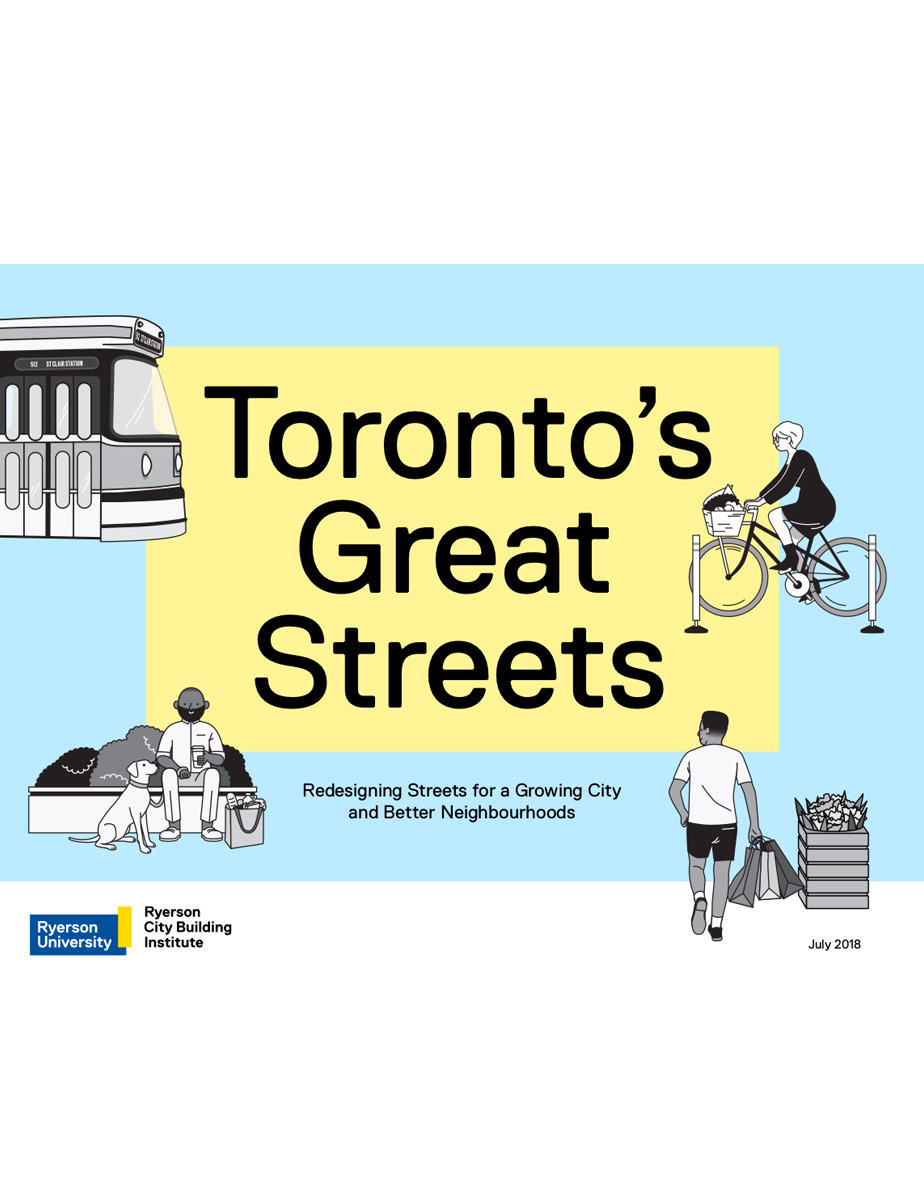Toronto’s Great Streets: Redesigning Streets for a Growing City and Better Neighborhoods is a new report by the Ryerson City Building Institute with funding from Metcalf. Lead authors, Claire Nelischer and Cherise Burda, profile five recently redesigned Toronto streets and examine what makes each of them successful. The report also identifies five additional streets that have the potential for greatness.
Toronto’s population is expected to increase 35% to almost 4 million by 2041, placing great stress on the City’s main road arteries. Much of this growth will take place downtown, where the population is projected to double. The report notes that street design is an evolving practice, with key ingredients for greatness including placemaking, mobility, economic vitality, safety, and accessibility.
Highly readable, it delves into all the elements that make Harbord Street, Roncesvalles Avenue, St. Clair Avenue West, Queens Quay West, and Market Street a success. Each street is offered up as a case study, replete with photos, maps, and text, detailing how each was transformed.
The report also highlights streets that, with the right modifications, have the potential for greatness. The current designs of Bloor Street, King Street, Downtown Yonge Street, Yonge Street North, and The Golden Mile are analyzed with an eye to how changes would improve them.
With municipal elections set for the fall, Toronto’s Great Streets is an important contribution to municipal discourse regarding urban growth and renewal. Claire Nelischer, the Institute’s Project Manager and author of the report, points out that reinventing streets to meet the needs of commuters, cyclists, pedestrians and businesses requires a commitment. “Nothing but new infrastructure can create real, tangible change to improve mobility and road safety,” says Nelischer. “And we need bold moves to make this happen.”


